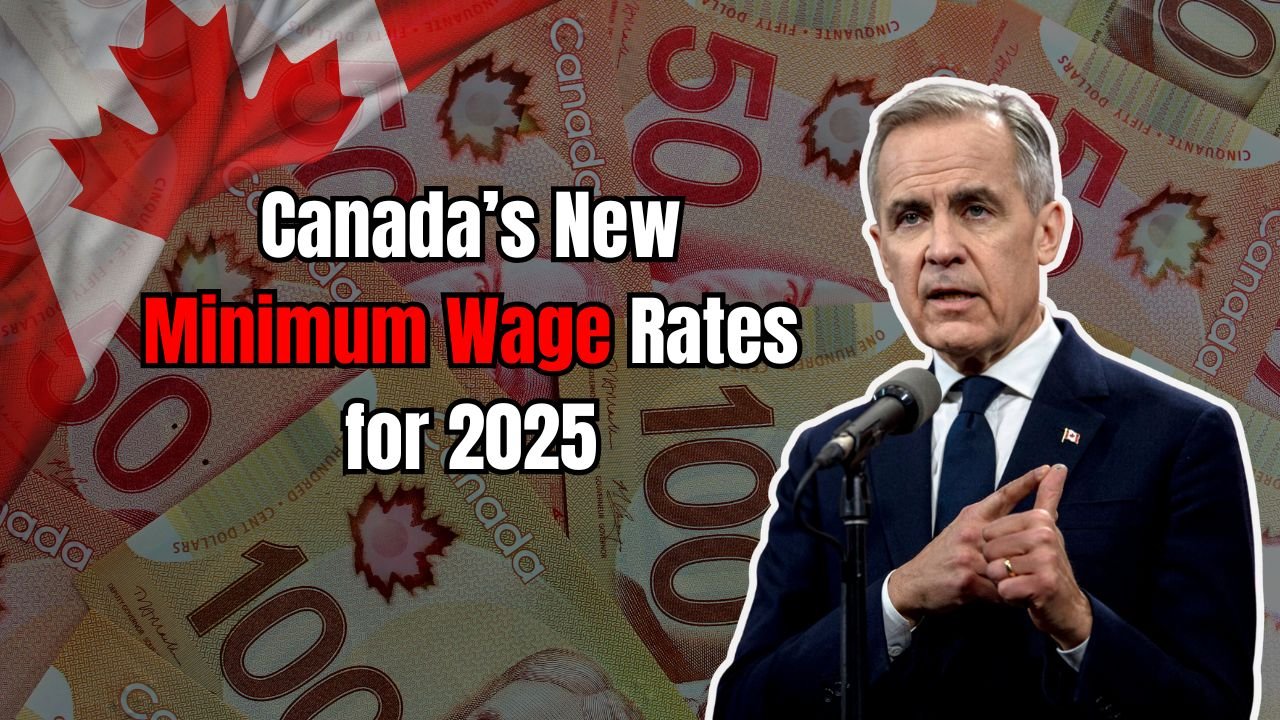Starting October 1, 2025, five Canadian provinces will implement updated minimum wage rates: Ontario, Manitoba, Nova Scotia, Saskatchewan and Prince Edward Island. The move aims to keep pace with the growing cost of living and provide fairer income for workers in low-wage positions.
These changes will benefit thousands employed in fields such as retail, hospitality, agriculture and other service-based industries, where a minimum wage serves as the baseline for earnings. At the same time, small and medium-sized employers will need to adjust operations to absorb higher payroll costs.
Provinces Rolling Out New Rates
Ontario
In Ontario, the new general minimum wage will rise to $17.60 per hour. Students under 18 will receive $16.60 per hour, while homeworkers will earn $19.35 per hour.
Manitoba
Manitoba’s new rate will climb to $16.00 per hour and will be linked directly to the Consumer Price Index (CPI), tying future increases to inflation.
Saskatchewan
Saskatchewan’s minimum wage will increase to $15.35 per hour.
Nova Scotia
Nova Scotia is opting for a two-phase adjustment: the rate will go to $15.70 per hour on April 1, 2025, then to $16.50 per hour on October 1, 2025.
Prince Edward Island
Prince Edward Island will raise its minimum wage to $16.50 per hour in October 2025, followed by a further increase to $17.00 per hour on April 1, 2026.
These measures are geared toward narrowing income gaps while allowing businesses a gradual adaptation to increased labour costs.
New Provincial Minimum Wages in 2025
| Province | New Rate(s) | Effective Date |
|---|---|---|
| Ontario | $17.60 (general), $16.60 (students), $19.35 (homeworkers) | October 1, 2025 |
| Manitoba | $16.00 | October 1, 2025 |
| Saskatchewan | $15.35 | October 1, 2025 |
| Nova Scotia | $15.70 (April 1), $16.50 (October 1) | 2025 (two-phase) |
| Prince Edward Island | $16.50 (Oct 2025), $17.00 (Apr 2026) | 2025-2026 |
Minimum Wages in Other Provinces and Territories
While the five provinces listed above are undergoing changes in 2025, other regions in Canada have already set higher minimum wages or are scheduled for future adjustments:
| Region | Current Rate | Notes |
|---|---|---|
| Alberta | $15.00 /hour | No increase announced |
| British Columbia | $17.85 /hour | Review due June 2026 |
| New Brunswick | $17.85 /hour | Scheduled rise April 2026 |
| Newfoundland and Labrador | $16.00 /hour | Increase due April 2026 |
| Nunavut | $19.00 /hour | Highest minimum wage in Canada |
| Northwest Territories | $16.05 /hour | Rate currently stable |
| Quebec | $15.75 /hour | Annual reviews |
| Yukon | $17.59 /hour | Indexed to CPI |
The differences in minimum wage policies across the country reflect each province or territory’s approach to cost of living, economic conditions and labour-market strategy.
Benefits for Workers—And the Challenges
Worker Benefits
- Higher minimum wages provide greater financial stability for employees, especially in sectors like retail and food service where housing, childcare and commuting costs weigh heavily.
- More disposable income may lead to stronger spending in local communities.
Ongoing Challenges
- Despite the increases, many rates still fall short of estimated living wages in major cities. For instance, in Toronto studies suggest a living wage above $22/hour, and in Halifax it’s closer to $21/hour. The gap remains a significant issue.
- Some workers may still need to hold multiple jobs or seek aid from government support programs to cover essentials such as:
- Rent and utilities
- Rising childcare fees
- Transportation and commuting costs
- Inflation-driven grocery and food expenses
Impact on Businesses and the Economy
Business Adjustments
Small and medium enterprises will face higher payroll costs. Possible responses include:
- Passing costs to consumers through higher prices
- Investing in employee satisfaction and retention to reduce turnover
Economic Effects
From an economic viewpoint:
- Higher wages can boost household disposable income, which may lead to increased consumer spending and local economic growth.
- Policymakers argue the long-term advantages—such as healthier, more stable communities—outweigh short-term business pressures.
Key consequences:
- Increase in consumer spending
- Potential upward pressure on consumer prices
- Improved employee retention and productivity
- Greater stability in lower-income communities
Implementation Timeline
- The first adjustment takes place in Nova Scotia on April 1, 2025.
- The main rollout occurs October 1, 2025, across all five provinces.
- By that date, employees should see the new minimum wage reflected in their pay.
- Monitoring and review will continue to evaluate how effective these changes are in reducing financial stress and supporting sustainable business practices.
Conclusion
With the wage increases set for October 1, 2025 (and some earlier or later in specific cases), Canada’s five provinces are taking significant steps to align minimum wages with the rising cost of living. Although these boosts will support many workers in service-based jobs, gaps remain between minimum and living wages—meaning challenges persist for households and businesses alike. Smart implementation, ongoing review and adaptive strategies will be key to realising the promise of fairer wages for all.
FAQs
How will the new minimum wage affect students under 18 in Ontario?
In Ontario, students under age 18 will be paid $16.60 per hour under the new minimum wage rules starting October 1, 2025.
Will all provinces raise their minimum wage on the same date?
No — while four of the provinces begin on October 1, 2025, Nova Scotia has a two-phase increase (April and October) and Prince Edward Island has a subsequent rise in April 2026.
Are the new minimum wages sufficient to cover cost of living?
Although the increases help, many estimates for living wage levels (e.g., ~$22/hour in Toronto) remain higher than the updated minimums, so a gap still exists.


